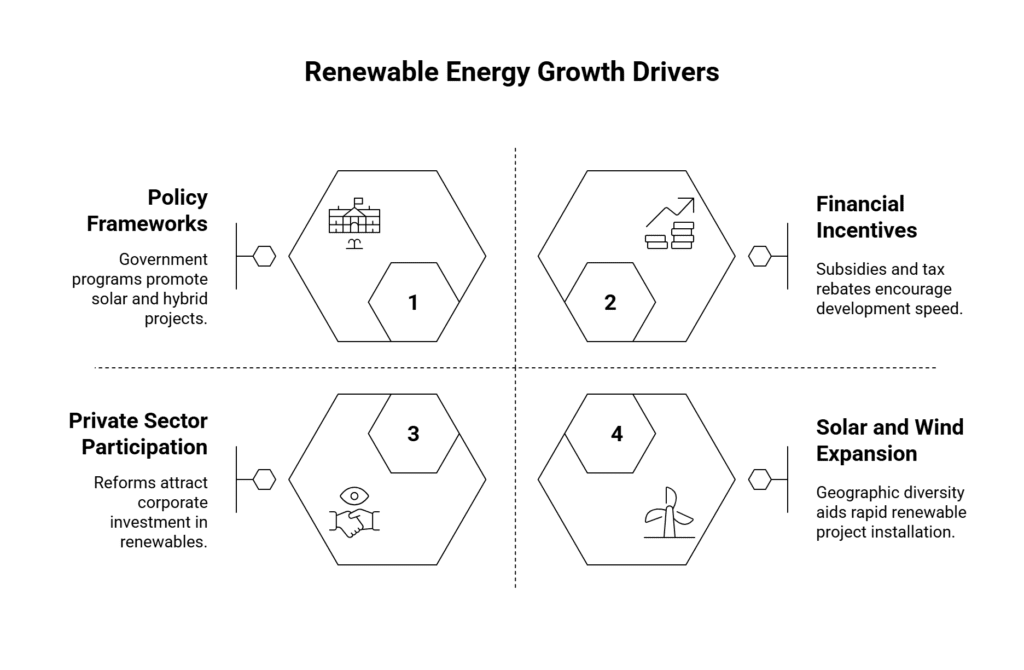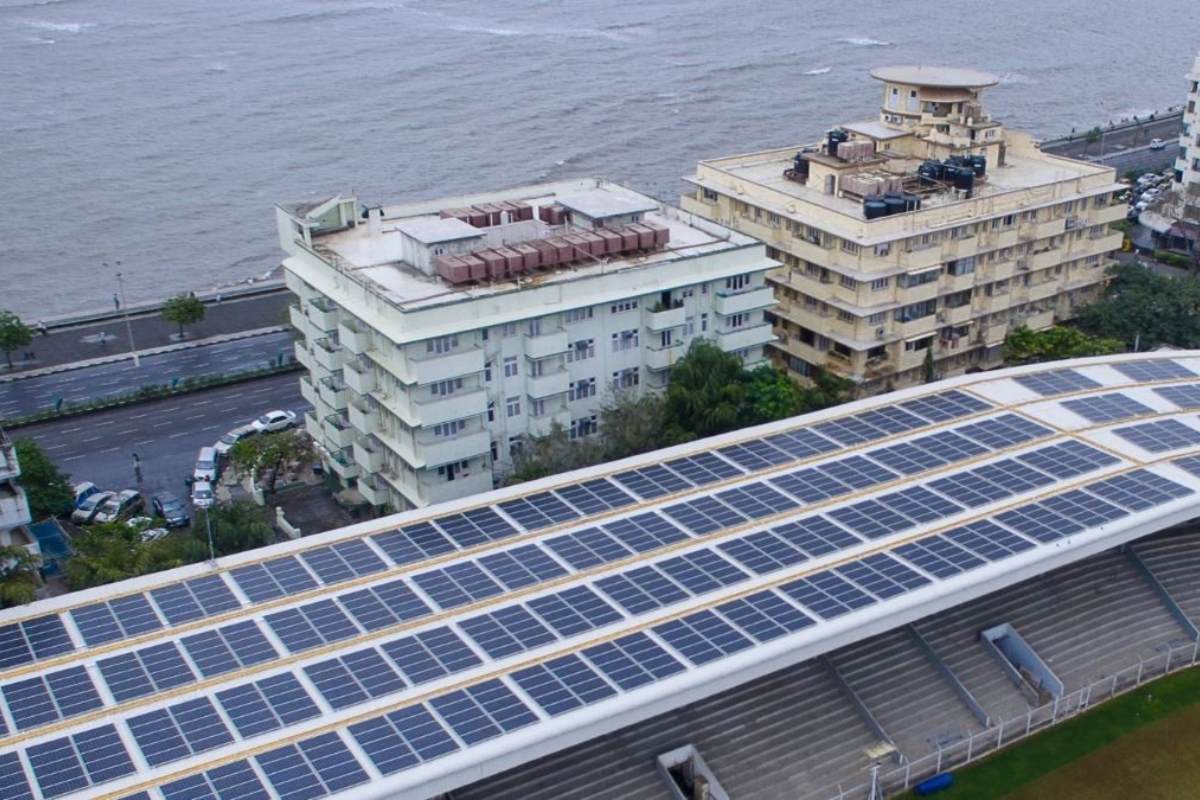A Landmark Moment for India’s Sustainable Energy Journey
Funny thing is, not many saw it coming, at least not this fast. But here’s the news: On August 15, 2025, Prime Minister Narendra Modi stood upon the ramparts of the Red Fort, sunlight glinting off the domes, the city humming far below, and announced a feat that wasn’t just huge for India, but for the world. India has officially hit its clean energy target. Five whole years ahead of schedule.
You read that right. India pledged to source 50% of its cumulative installed electricity capacity from non-fossil fuel sources by 2030. Now, in 2025, the goal is already met. It’s not a small checkmark in a policy handbook. It’s a seismic shift, one with ripples likely to spread far beyond the Indian subcontinent.
Setting the Scene: The 2030 Pledge, Rewind to COP26
Let’s take a few steps back. COP26, Glasgow, 2021: India committed to some bold climate action. The headline promises?
- Installing 500GW of non-fossil electricity capacity by 2030.
- Cutting projected carbon emissions by one billion tonnes.
- Slicing the country’s emissions intensity by 45%, all before that big 2030 deadline.
Governments worldwide , you know, are always cautious with their optimism , watched closely. It’s a heavy lift for a country with booming energy needs and fast-growing infrastructure.
But, see, goals have a way of galvanizing a nation. Especially when the stakes involve not just electricity, but the very air they breathe.
The Numbers: India’s Energy Mix in 2025
Some folks talk about progress. India does the math. So here are the figures that matter:
- Total installed electricity capacity: 484.8GW, as of June 30, 2025.
- Non-fossil sources (renewables, large hydropower, nuclear): 242.8GW. That’s 50.08% of the total grid.
- Most recent growth? A record-setting 22GW of new renewable capacity was added in just the first half of this year. It breaks down to 18.4GW of solar, 3.5GW of wind, and another boost from bioenergy.
It’s not all bragging rights, either. As of this milestone, half of India’s grid runs on sources that won’t run dry or dirty the air. From sun-drenched fields to wind-blown coastal plains, energy is turning green faster than expected.
The Driving Forces: Policy, People, and Projects
So what moved the needle? Turns out, it wasn’t just government speeches or international climate summits.

A few key drivers stand out:
- Visionary Policy Frameworks: Flagship programs like PM-KUSUM, which targets solar pumps for farmers, and PM Surya Ghar: Muft Bijli Yojana, bringing rooftop solar to everyday homes. The National Wind-Solar Hybrid Policy fosters hybrid renewable projects across the land.
- Financial Incentives: The government rolled out subsidies, tax rebates, and charge waivers, including for transmission. That’s helped developers move with unusual speed.
- Private Sector Participation and Reforms: Nuclear energy reforms unlocked private investment, and renewables saw major corporate entries. Ten new nuclear reactors are already operational, with the sector’s capacity projected to increase tenfold by 2047, marking a significant milestone in energy self-reliance.
- Rapid Solar and Wind Expansion: India harnessed its geographic diversity, with sunshine in Rajasthan, wind in Tamil Nadu, and rivers humming with hydroelectric projects in the northeast. Developers, eager for government support (and lower costs!), rushed to install projects, breaking records quarter after quarter.
Here’s the kicker: Every time a homeowner or farmer signed up for a solar scheme, every time an investor bet on clean energy, it pushed the national total higher. A collective shift, not just a top-down directive.
The Role of Nuclear: India’s Quiet Giant Emerges
Let’s pause and talk nuclear. Believe it or not, nuclear energy, often lost in the shuffle, is front and center in today’s transformation.
- India now operates ten new nuclear reactors, with plans underway to multiply nuclear capacity by more than ten times by 2047, marking 100 years of independence.
- Private sector participation is gathering steam, with reforms aimed at making the sector more competitive and innovative.
- The long view? By ramping up safe nuclear energy, India hopes to strengthen energy security while balancing climate responsibilities.
Not everyone loves nuclear; safety debates won’t fade overnight, but at this scale, it’s a signature piece of the puzzle.
Missions in Motion: Deepwater and Critical Minerals
And just when you thought the announcements were done, PM Modi rolled out two national missions that widen the focus beyond just solar and wind:
- National Critical Minerals Mission: Tasked with scouting 1,200 sites across India for the minerals vital to clean energy technologies, think lithium for batteries, rare earths for electronics, and strategic metals for defense and advanced manufacturing.
- National Deepwater Exploration Mission: Designed to tap India’s deepwater reserves for oil, gas, and other energy resources, strengthening domestic energy production and curbing import bills.
Control over these resources, the PM argued, will underpin not just energy transition, but industrial autonomy and national security.
A Stunning Pace: 2025’s Renewable Growth
One record, then another. It’s been a year of remarkable surges:
- In the first half of 2025, India added more than 22GW of new renewable capacity, a jump of 57% over the same period last year.
- Renewable power output soared 24.4% from January to June, topping out at 134.43 billion kWh. Coal-generated electricity fell by 3%, a small but decisive dip, compared to previous years.
- Thanks to an early monsoon, economic factors, and domestic policy pushes, India’s climate-sensitive grid looks more robust than ever.
Funny thing about records: Once broken, they set a new bar for what’s possible.
The International Angle: Standing Out on the World Stage
Look, the world watches India’s progress closely. With US pressure to reduce Russian oil purchases, ongoing debates over global warming, and climate summits circling every year, India is proving it can walk the walk.
- At COP26, India’s NDC commitments were among the most ambitious from a developing nation.
- In 2025, those same pledges are not just paperwork, but milestones met, beating the clock and showing that scale isn’t a barrier.
- Other fast-growing nations are taking note. India is now in a position to shape best practices, influence global pricing, and even export green technologies.
Here’s the twist: The move isn’t just about the environment. Cheap, domestic clean energy frees up national funds for schools, rural projects, farmers, and youth programs, not just for costly fossil fuel imports.
Challenges Still Linger: Fossil’s Persistent Shadow
No rosy picture is complete without its undercurrent. Let’s be honest: Coal still plays a big role, accounting for about 75% of actual electricity generated, even as renewables surge in capacity. So the battle isn’t finished.
Other snags remain, too:
- Grid integration hurdles. Clean energy fluctuates with the sun and wind, posing technical challenges.
- Slow adoption of energy storage. Batteries and pumped hydro projects lag behind global leaders.
- Regional disparities. Some states push ahead; others lag, reflecting infrastructure gaps.
But the trajectory? Wildly upward. Each gigawatt added to the clean side tips the balance, slowly but surely.
What Ordinary Citizens See: Lights, Bills, and Air
Behind the policy headlines, what does this mean for the regular person, at home or in business?
- Cheaper electricity bills for many, thanks to distributed solar and transmission charge waivers.
- Improved air quality in polluted metros as cleaner sources edge out smokestack coal.
- Job creation in solar manufacturing, installation, maintenance, and new energy sectors.
- Farmers tapping solar pumps, communities gaining energy security, and youth engaging with innovation, not just as consumers, but as future leaders.
When the PM talks about funds flowing to villages, youth, and farmers, it’s not theoretical: those rupees could have funded diesel and petrol imports. Now, they’re available for India’s own development priorities.
Looking Ahead: Next Targets and Aspirations
So, hitting 50% ahead of time is a milestone. But where does India go from here?
- 500GW non-fossil capacity by 2030 remains the next big checkpoint.
- Emissions intensity cuts, broader rural electrification, and a manufacturing push, all on the agenda.
- Emerging technologies (think green hydrogen, small modular nuclear reactors in Bihar, advanced batteries) are likely to take center stage soon.
- Energy self-reliance is more than a slogan. With National Deepwater and Critical Minerals Missions rolling, India wants not just clean energy, but control over the supply chain that powers it.
Final Reflections: A New Reality, and the Road Not Yet Travelled
Here’s what’s true, and it’s worth pausing for. India, a nation with massive energy needs, world-record population, and dizzying economic growth, has just set a global pace for clean energy transition. Five years early. It’s not perfection, but it’s unprecedented.
- The country’s pledge: met.
- The technology: scaling.
- The people: committed.
- The future: still up for grabs, but with cleaner air, lower bills, and a blueprint that other nations might just borrow.
Whether the rest of the world can keep up, well, that’s a story for another day.
Quick Facts & Highlights
- Total installed capacity (June 2025): 484.8GW
- Non-fossil capacity share: 242.8GW (50.08%)
- Record renewable additions (H1 2025): 22GW (18.4GW solar, 3.5GW wind)
- Nuclear reactors operational: 10, with capacity to grow tenfold by 2047
- National Missions launched: Deepwater Exploration (offshore reserves) & Critical Minerals (1,200 sites for energy/tech minerals)
- Renewable power output growth (Jan–June 2025): +24.4% to 134.43 billion kWh
SEO Keyword
India Clean Energy Achievement 2025, PM Modi climate announcement, renewable energy progress India, non-fossil electricity capacity, solar energy expansion India, National Critical Minerals Mission, National Deepwater Exploration, energy self-reliance India, green hydrogen mission, nuclear energy growth India






















